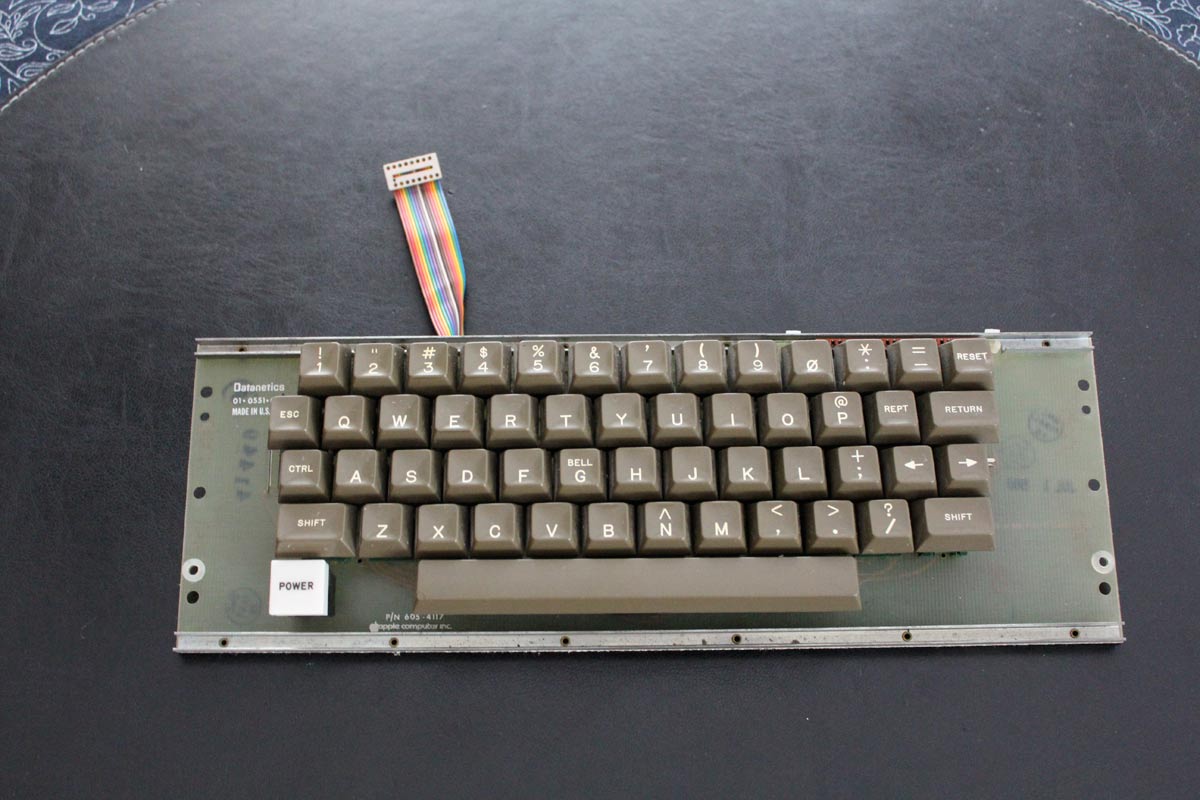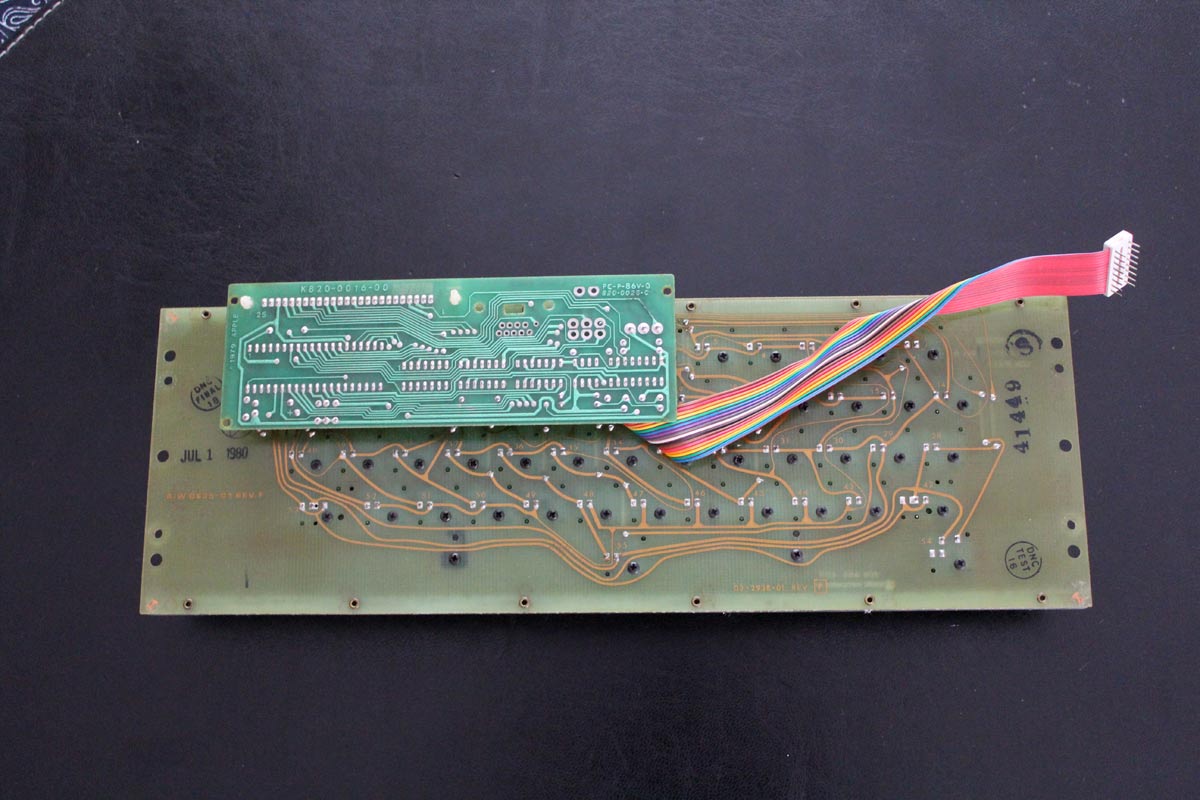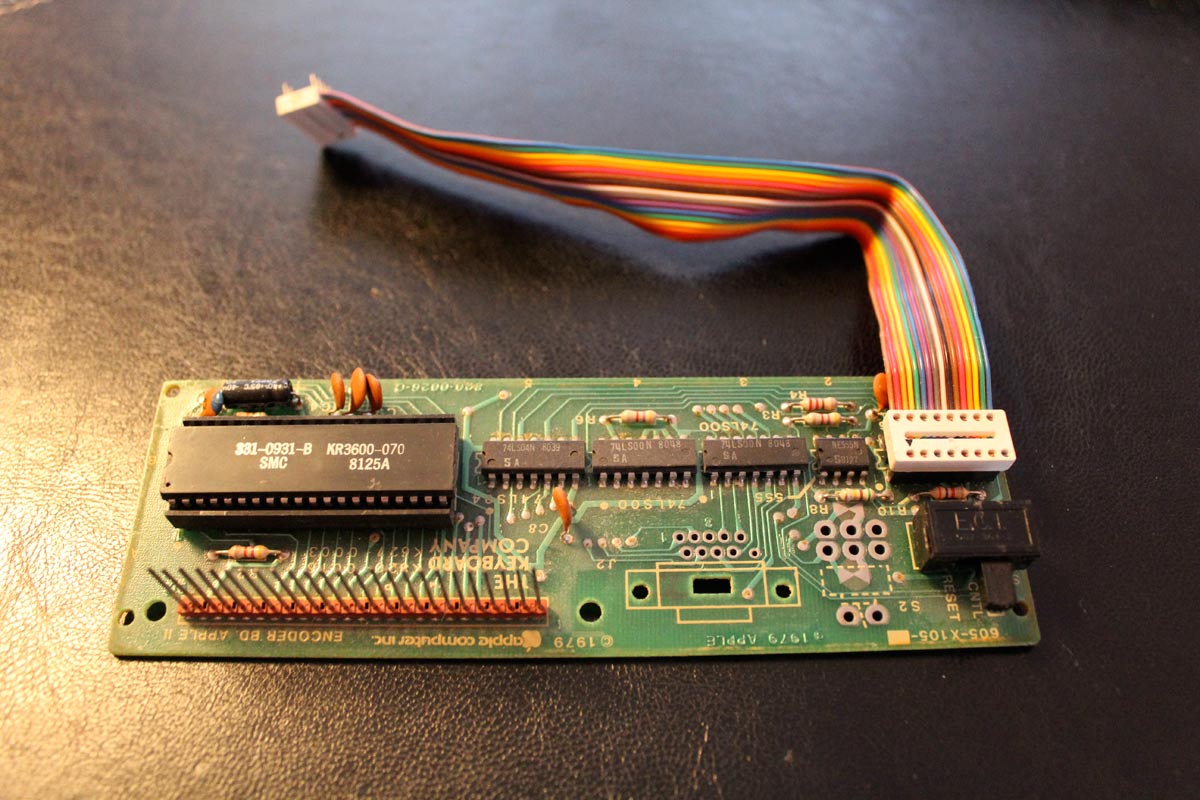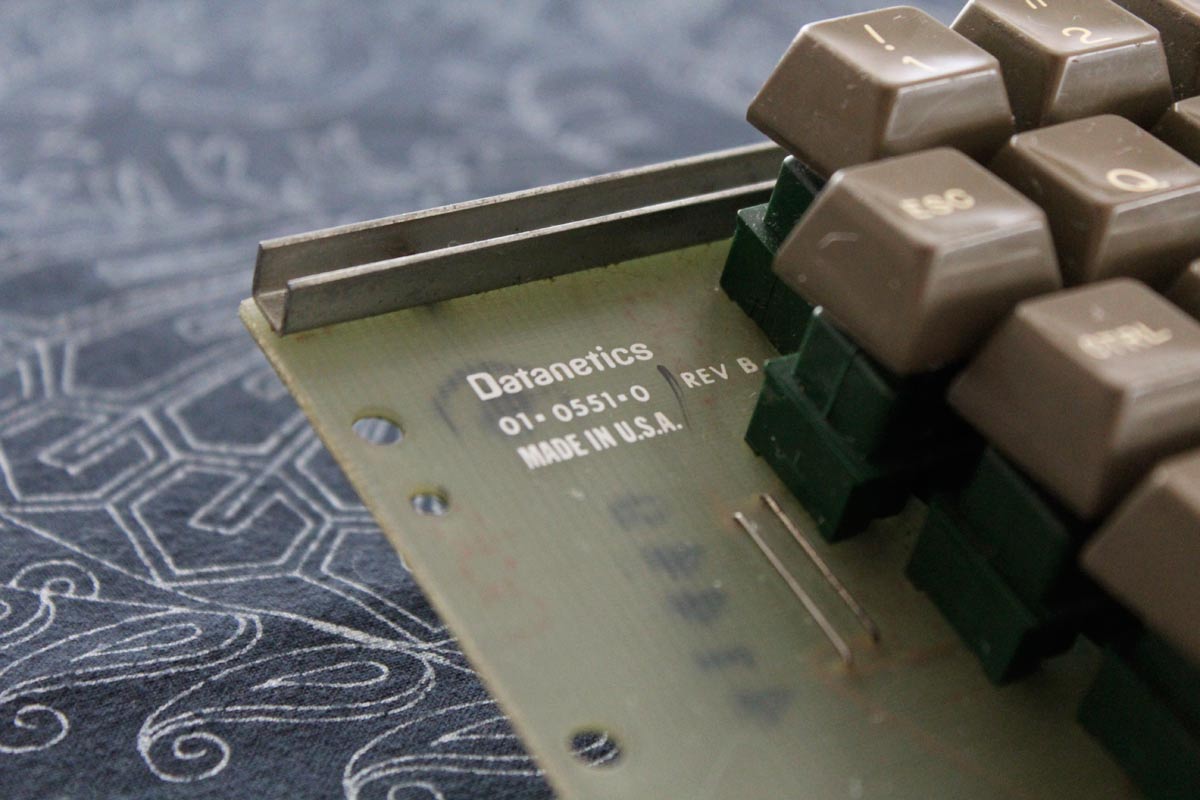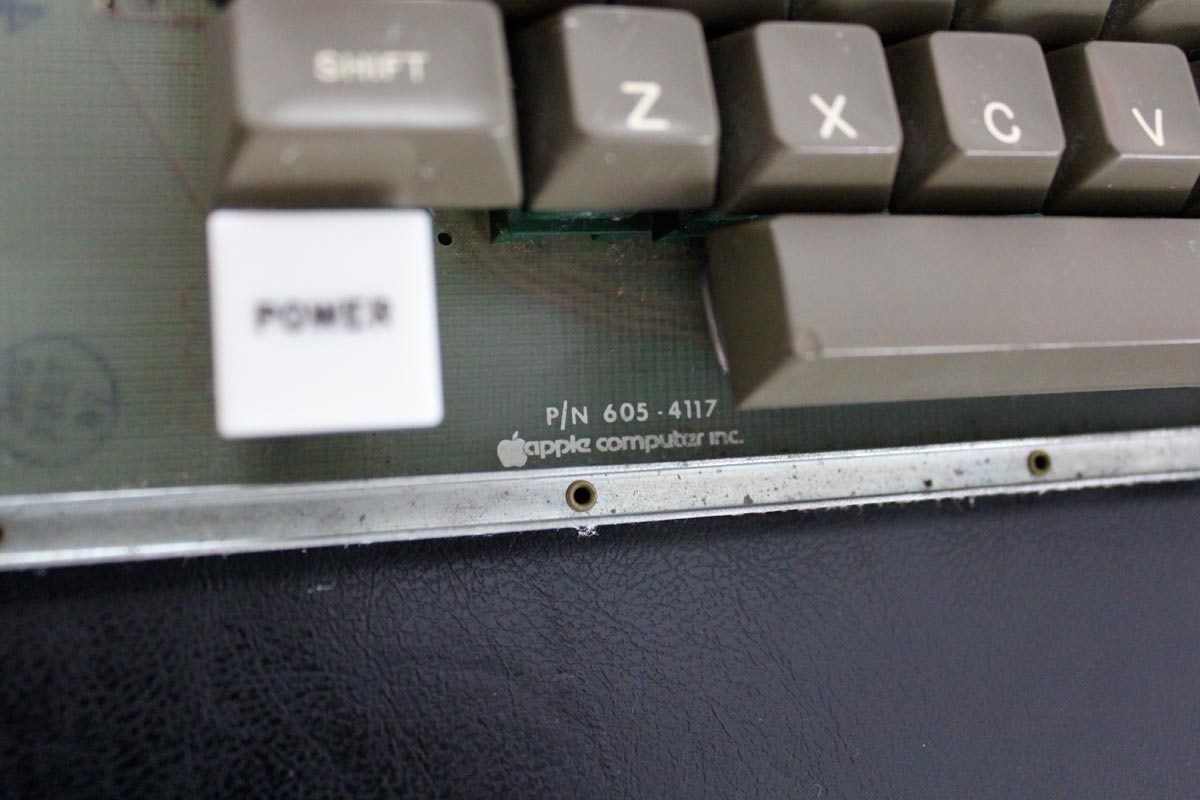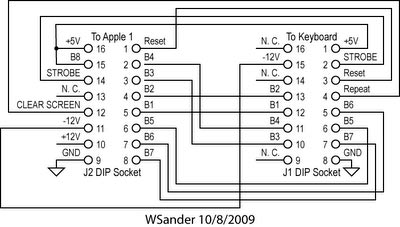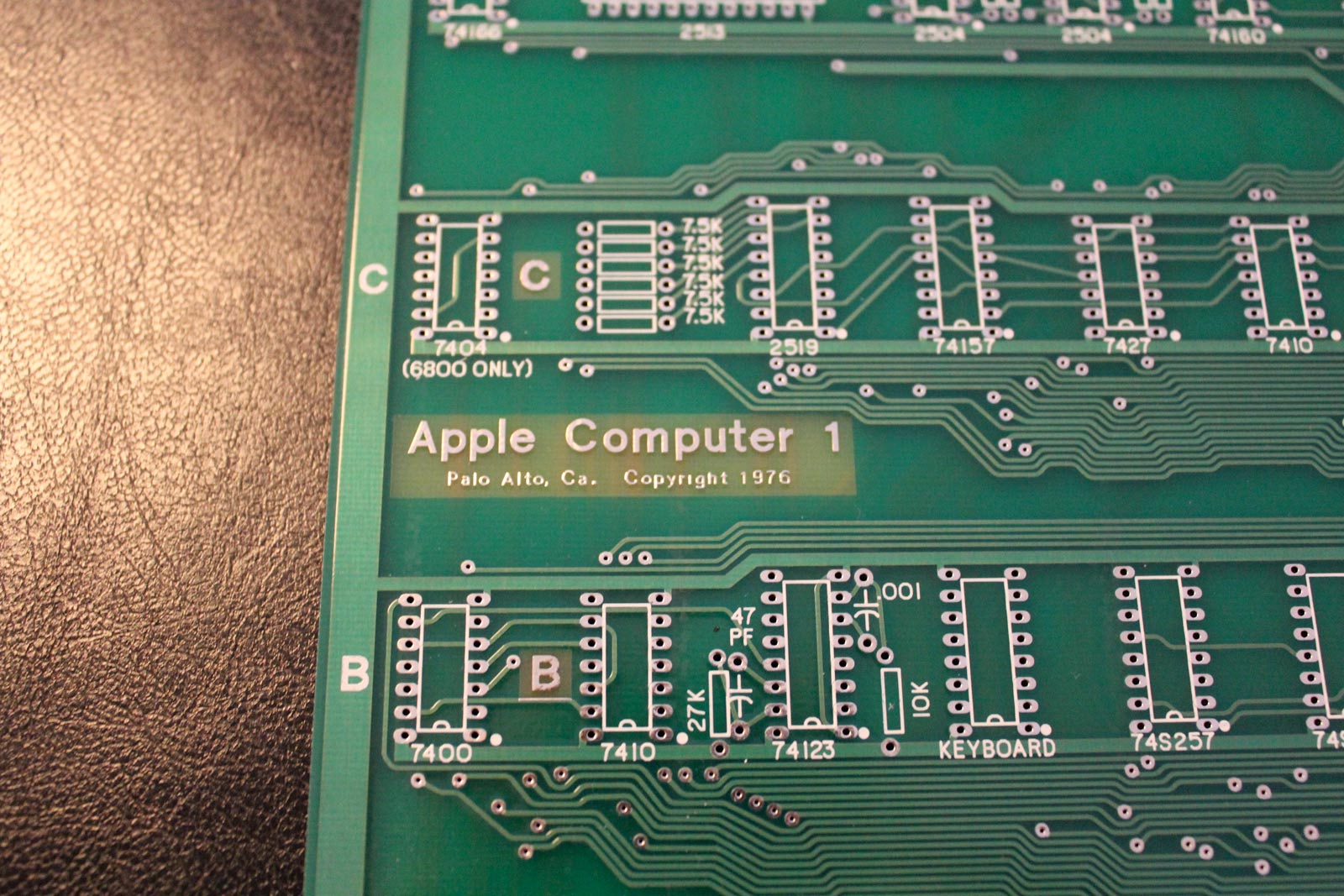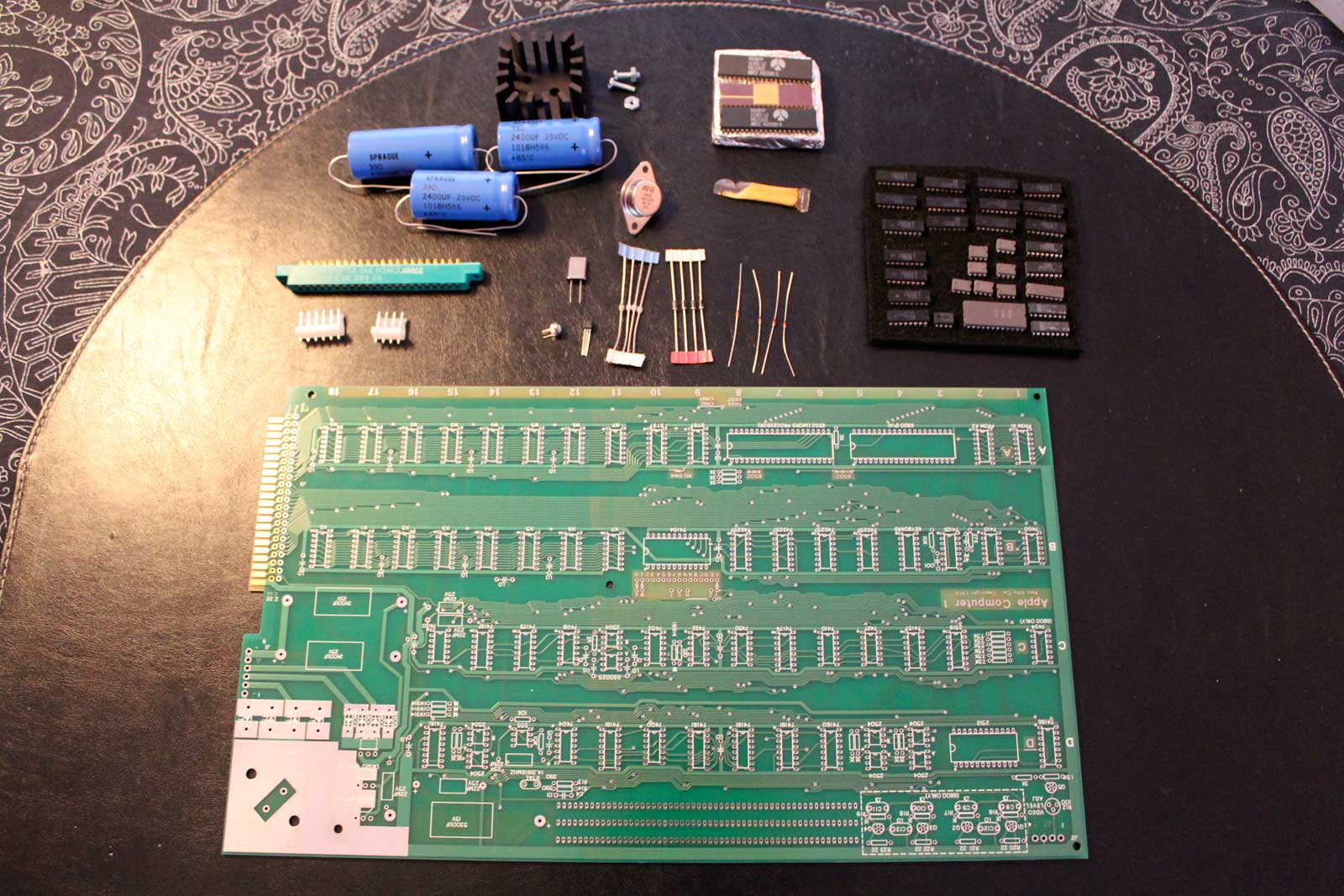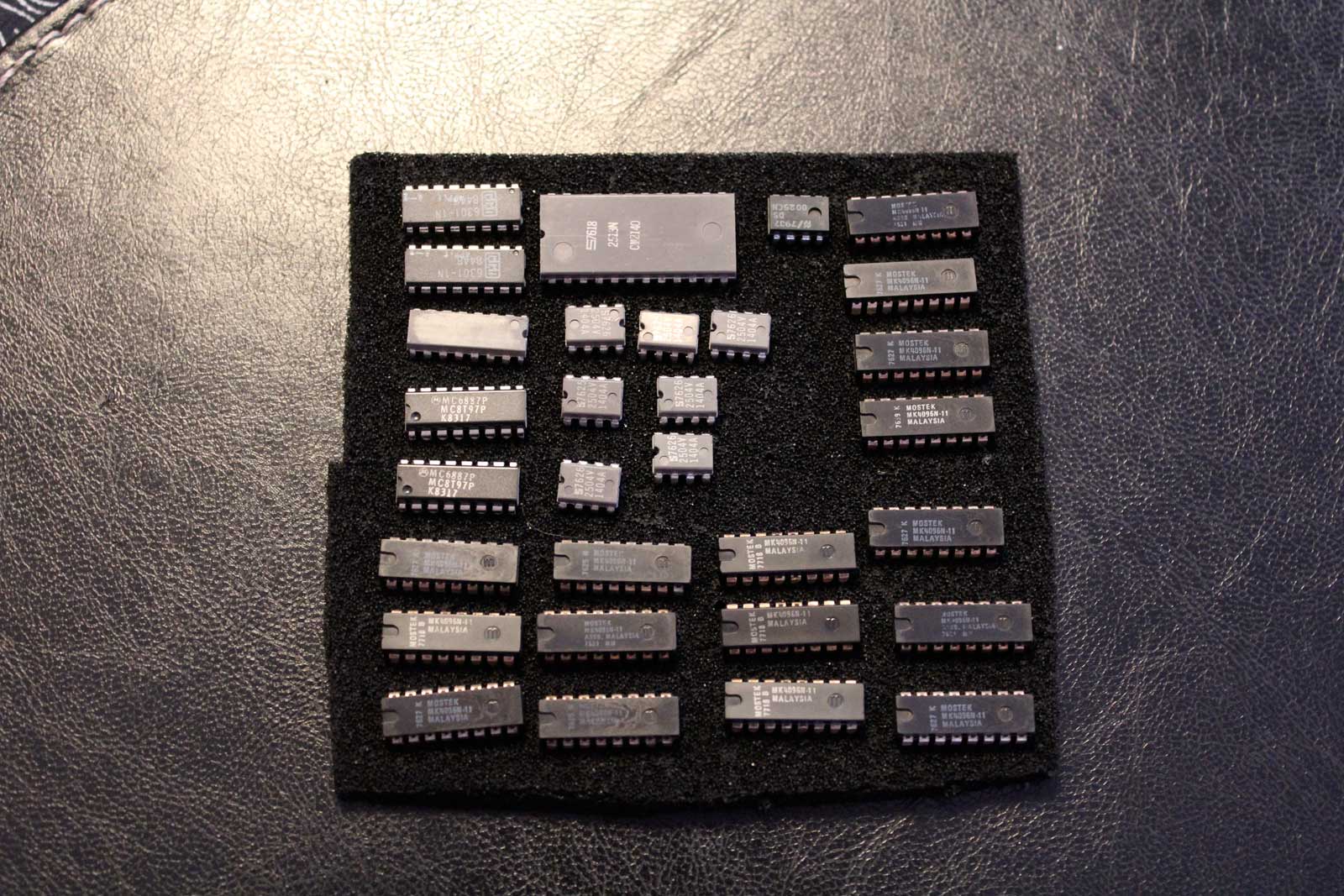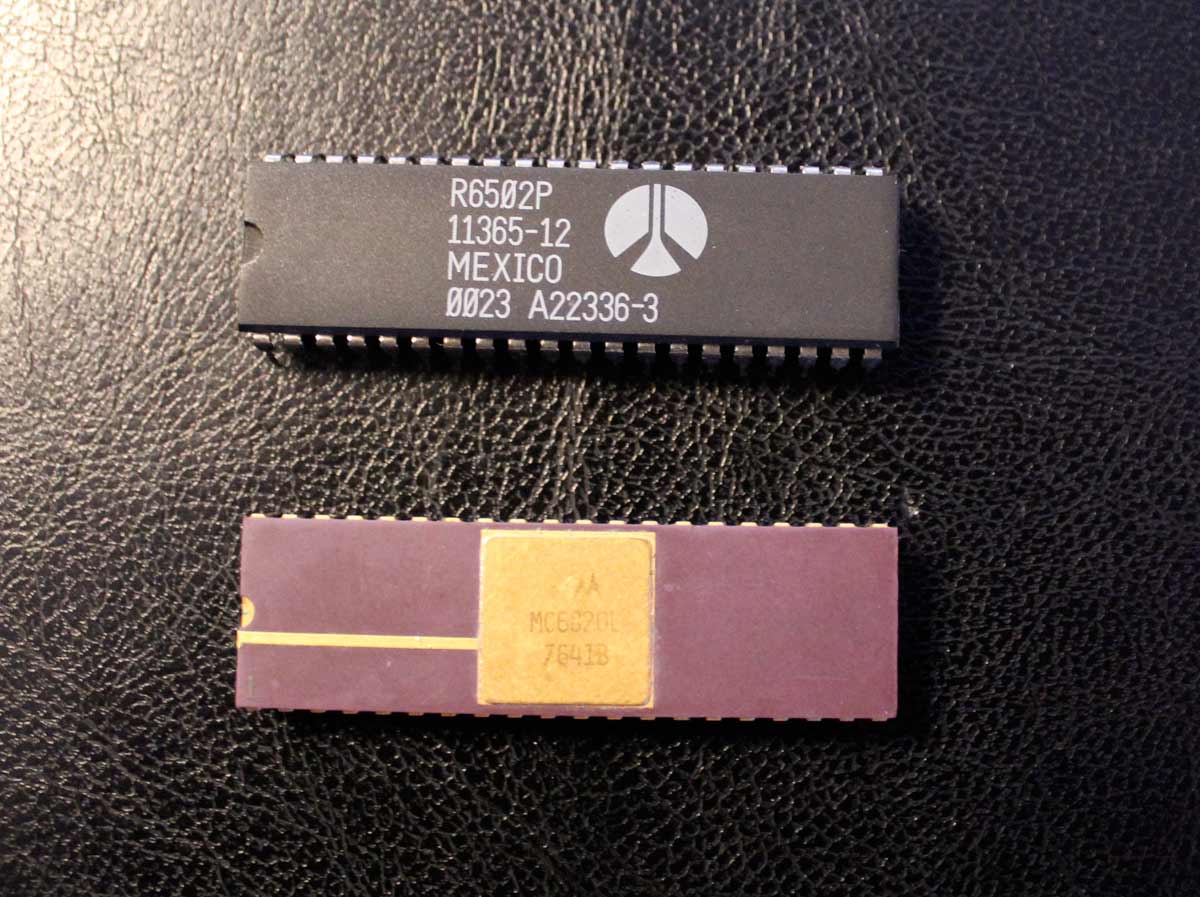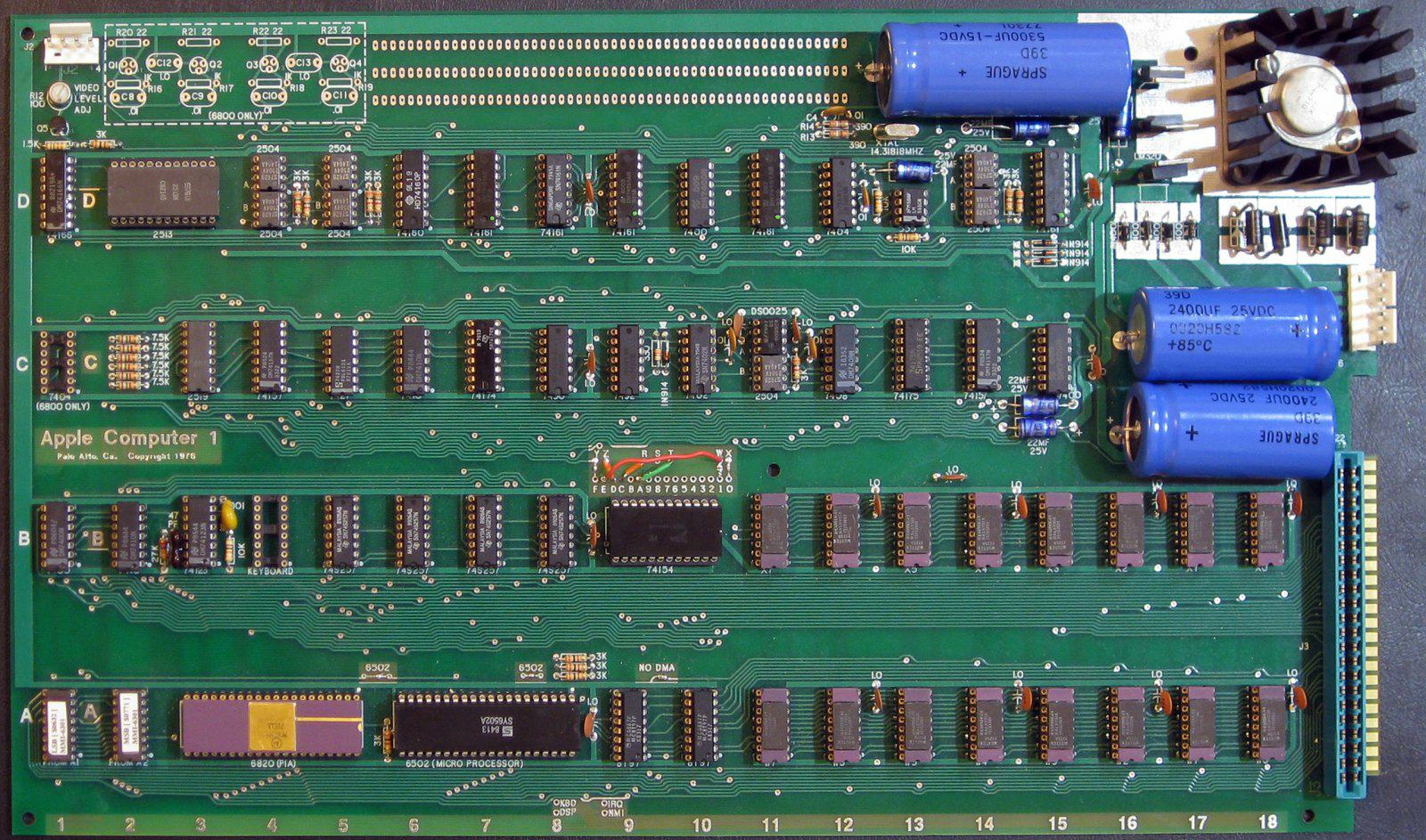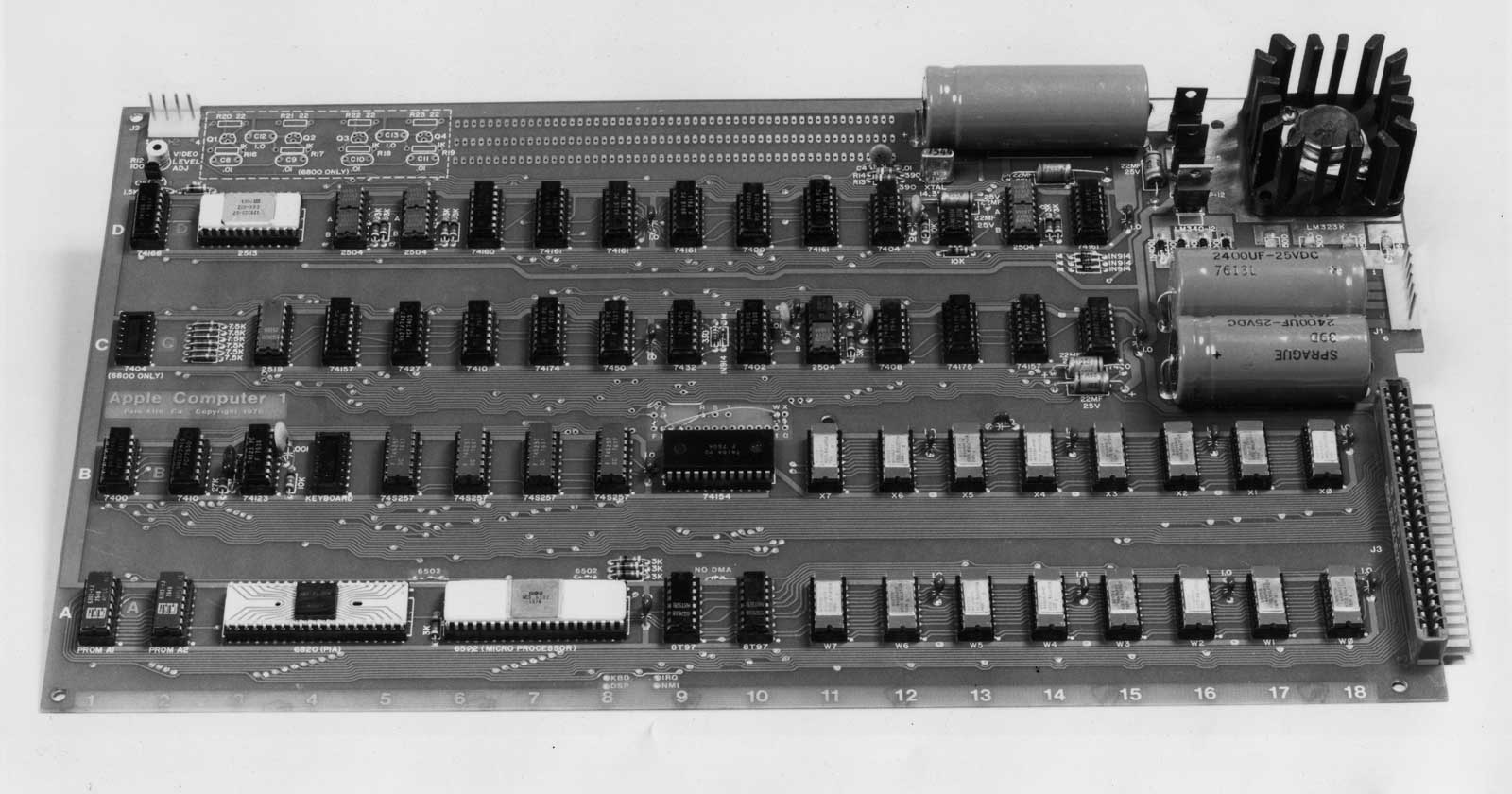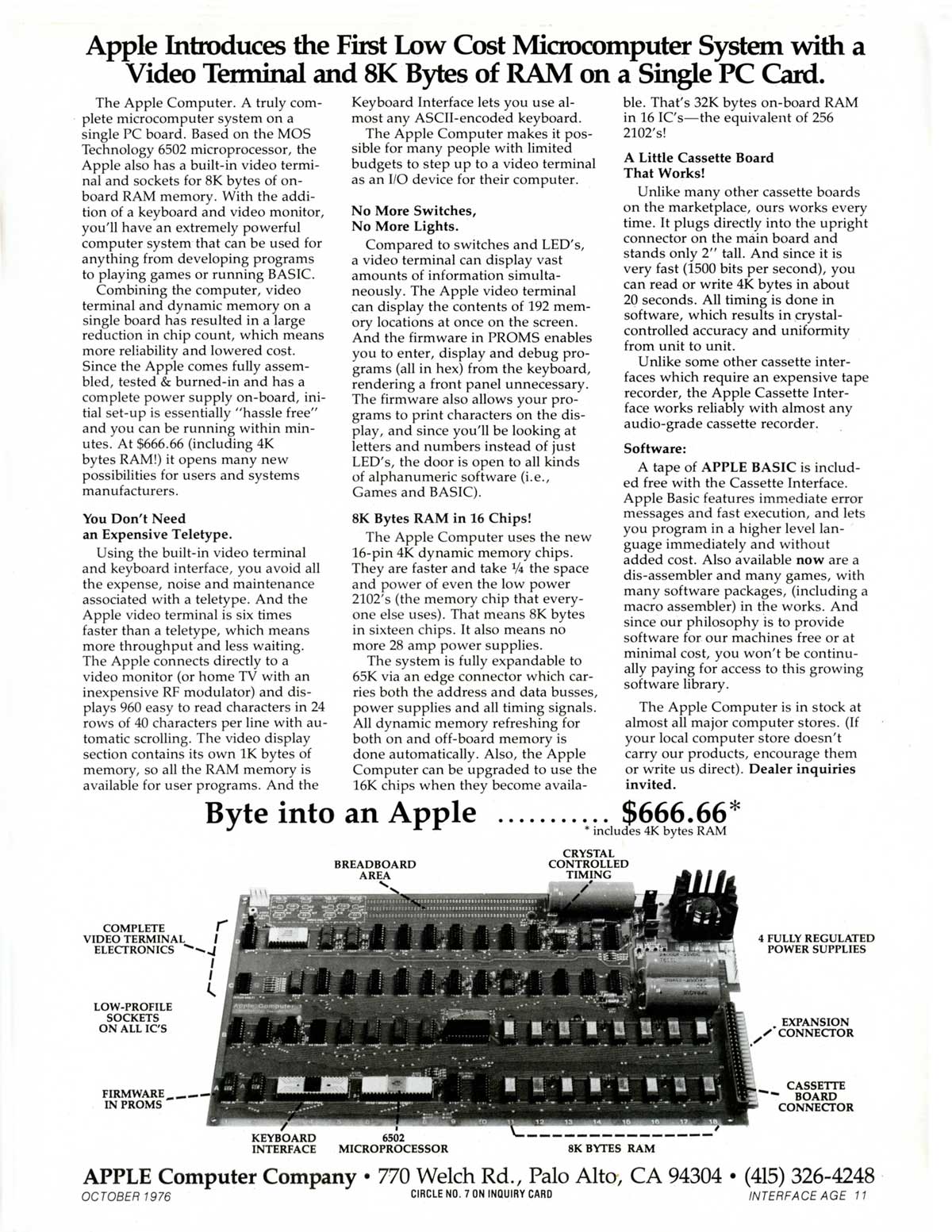Making of my own Apple I
samedi 10 mars 2012
The Keyboard
As you know, the Apple 1 was sold as a simple motherboard, no screen, no keyboard, no data storage. For the screen, you can use any TV with a video input. The monochrome video signal is compatible with all modern TVs including the latest LCDs (I'll use one little flat LCD TV with a front video input).
For the keyboard the problem is a litte more complicated. But there is a solution for every problem, right? I found one, a tricky one, but it will work! :) The solution is to use an old Apple II keyboard. The pinout of the connector is different but the signal is compatible. All I had to do was to find the keyboard, then I'll make the pinout adaptor.
I found the Apple II keyboard on internet. It's in good condition despite its age (1980) and the decoder board located on the back side is working (I tested it on an Apple II Europlus).
This is a DATANETICS ref 01-0551-0 rev B, Apple part/number 605-4117 (see pics below):
The pinout adapter is easy to make using a prorotype board (to be wired) and following the schematic below:
For information, another Apple 1 enthusiast John Calande did this operation successfully (see John Calande's blog) so this should be easy to perform. To be continued...
mercredi 1 février 2012
The Apple I PCB, The Masterpiece
The MIMEO Apple I PCB is really a masterpiece. I can't stop watching and touching it! :)
The quality of the board is outstanding. Mike worked on the PCB layout using existing hi-res pictures of originals boards. It was a huge work for him. See how he progressed on this work by reading his blog: Mike's Blog
Below are two pictures of the bare Mimeo PCB I received in the shipment (front and back sides):
All the details have been copied close to the original boards. Below is a close picture of the Apple Computer 1 logo on the board:
Update: For those who want to make an Apple I, Mike Willegal has new PCBs available for the same price: Bare Mimeo PCBs now available
lundi 30 janvier 2012
Mike Shipement Has Arrived
Today is a great day! Mike shipement has finally arrived. He prepared and sent them very quickly but the USPS and the french customs are so slow! :( ... but well, now they are here.
I appreciate the way Mike made the package: very serious and professional. All the components are in perfect condition, including the beautiful MIMEO PCB. The ICs are plugged in an antistatic foam which is a good thing. See below all the components I have now:
Below are all the rare components I got from Mike (ROMS, RAMS, Signetics chips...). They are all plastic but really vintage and in very good condition. Mike certified that they are tested and functional. I trust him 100%, he's a professional person.
The PCB is a masterpiece. It is really professionally done. CONGRATULATIONS MIKE! ... Today the project is becoming "real".
mardi 10 janvier 2012
I Got The CPU And The PIA
I found the 6502 microprocessor and the PIA (Peripheral Interface Adapter) MC6820. I got them from a local enthusiast who was selling a few vintage components on Internet.
He was selling one used Rockwell R6502P in new condition. I contacted him "Do you have two of them?", he said YES! I also asked him "Do you have a MC6820?", he responded "yes, a vintage ceramic one"... WOW!! Excellent! I like these ceramic ICs which are hard to find. Today I received them, they are beautiful. See the picture below:
To get more information on these main components, see the links below:
- 6502.org - The 6502 microprocessor resource
- Wikipedia MOS 6502 page"
- Wikipedia PIA page"
- MOS 6502 Hardware Manual"
- Motorola 6820 Hardware Manual"
mardi 27 décembre 2011
Mike Has The Components
As I said in the previous message, I contacted Mike Willegal... HE HAS THE COMPONENTS!!!! WOW!!! GENIAL!!! :) :) :) ... sorry but I'm so happy :) :) :)
My concerns was about the MIMEO bare board! Without this printed circuit board (PCB), no Apple I. I also ordered the ROMs (Wike is so kind, he programmed them with the Apple I firmware). And I ordered some rare components and integrated circuits, see below:
- 4 x 1N4001 Diode
- 4 x 1n914 Diode
- 4 x A14F Diode
- 2 x 8T97 IC
- 2 x Intel/MMI 3601 256x4 prom
- 1 x Signetics 2513 char ROM
- 7 x Signetics 2504v shift reg
- 1 x Signetics 2519b
- 1 x DS0025C Two Phase MOS Clock Driver
- 16 x DRAM 4Kx1 (MOSTEK MK4096)
- 2 x 2400uF 25 Volt Cap SPRAGUE
- 1 x 5300uF 15 Volt cap SPRAGUE
- 1 x Crystal -14.3181 Mhz HC49/U
- 1 x LM323K heatsink
- 1 x LM323K +5V voltage regulator (3AMP)
- 1 x Board Edge Cinch 44 pin (.200 between row spacing)
- (other minor components)
I've decided not to order all the components because I don't want to turn this project into a simple kit assembly. I'll search the missing components on internet, mainly eBay I guess but not only. Several other sources for used components are available.
For the 74 serie TTL ICs, I'll buy them all new to limit problems during the first boot. Then, once the Apple I will be functional I'll search vintage ones and change them one by one. The transformers couldn't be purchased from Mike because in France the domestic voltage is 220V, not 110V. I'll buy new ones, compatible with the STANCOR originals.
Now I'm waiting for the shipement to arrive... :D
My concerns was about the MIMEO bare board! Without this printed circuit board (PCB), no Apple I. I also ordered the ROMs (Wike is so kind, he programmed them with the Apple I firmware). And I ordered some rare components and integrated circuits, see below:
- 4 x 1N4001 Diode
- 4 x 1n914 Diode
- 4 x A14F Diode
- 2 x 8T97 IC
- 2 x Intel/MMI 3601 256x4 prom
- 1 x Signetics 2513 char ROM
- 7 x Signetics 2504v shift reg
- 1 x Signetics 2519b
- 1 x DS0025C Two Phase MOS Clock Driver
- 16 x DRAM 4Kx1 (MOSTEK MK4096)
- 2 x 2400uF 25 Volt Cap SPRAGUE
- 1 x 5300uF 15 Volt cap SPRAGUE
- 1 x Crystal -14.3181 Mhz HC49/U
- 1 x LM323K heatsink
- 1 x LM323K +5V voltage regulator (3AMP)
- 1 x Board Edge Cinch 44 pin (.200 between row spacing)
- (other minor components)
I've decided not to order all the components because I don't want to turn this project into a simple kit assembly. I'll search the missing components on internet, mainly eBay I guess but not only. Several other sources for used components are available.
For the 74 serie TTL ICs, I'll buy them all new to limit problems during the first boot. Then, once the Apple I will be functional I'll search vintage ones and change them one by one. The transformers couldn't be purchased from Mike because in France the domestic voltage is 220V, not 110V. I'll buy new ones, compatible with the STANCOR originals.
Now I'm waiting for the shipement to arrive... :D
jeudi 22 décembre 2011
I Think I Found The Components
Today I found a solid way to start my project. An Apple enthusiast named Mike Willegal is selling components to make your own Apple I. He can provide absolutely everything: components (even rare vintage integrated circuits), programmed PROMS etc... He has even produced a set of ready-to-use printed boards that he designed himself.
This is a replica of the original Apple I printed board. Furthermore, even if the components are not all "vintage", they do have a vintage "style", especially with the three blue chemical SPRAGUE capacitors. They'll allow me to create a cool, stylish replica of the original Apple I, see below:
Mike Willegal calls his Apple I replica MIMEO. I like it because it's really close to the original. Compare the MIMEO replica to the hi-res scan of the original Apple I Ad:
Some integrated circuits like the 1x4K rams MOSTEK MK4096 are very hard to find. These elements are essential in order to create your own Apple I. Without them the computer cannot be realized. I'm going to contact Mike to see if all those components are available.
Site of Mike Willegal: http://www.willegal.net/blog/
Mike Willegal's "Mimeo 1 Kit": http://www.willegal.net/appleii/apple1-kit.htm
This is a replica of the original Apple I printed board. Furthermore, even if the components are not all "vintage", they do have a vintage "style", especially with the three blue chemical SPRAGUE capacitors. They'll allow me to create a cool, stylish replica of the original Apple I, see below:
Mike Willegal calls his Apple I replica MIMEO. I like it because it's really close to the original. Compare the MIMEO replica to the hi-res scan of the original Apple I Ad:
Some integrated circuits like the 1x4K rams MOSTEK MK4096 are very hard to find. These elements are essential in order to create your own Apple I. Without them the computer cannot be realized. I'm going to contact Mike to see if all those components are available.
Site of Mike Willegal: http://www.willegal.net/blog/
Mike Willegal's "Mimeo 1 Kit": http://www.willegal.net/appleii/apple1-kit.htm
jeudi 15 décembre 2011
Welcome To My Apple I Blog
Since a couple of days, I had an idea about doing something useful... something extraodinary and remarkable : making myself an original Apple I replica. What a better way to learn micro-computing's bases than "re"building this kind of Legend, which is the Apple I?
Let's start with a piece of history. The Apple I was created and produced in 1976 by Steve Jobs and his associate Steve Wozniak. First product of Apple Computer Inc, the Apple I was sold at the price of $666.66. Though it was "the first Low Cost Microcomputre System", the Apple I was quite expensive for individuals. 200 computers were ordered and only the half of them were manufactured by "the two Steve". This machine was a pure hobbyist product, sold without keyboard, no screen and no storage device... however it was pretty wonderful =)
See below how it was advertised by the brand new Apple Computer Company. 8Kb RAM on a single board! Nowadays it could seem ridiculous, but nearly 40 years ago it was a real achievement:
At that time, it was a huge step for Computing History. A full computer on a single board for a very low price (compared to the ones which already existed). That was Jobs' vision : making the micro computing afordable for everyone. Well, this version was created for people having computing knowledge, known as "geeks" nowadays, but the concept was here. Jobs made a huge upgrade with the Apple II, which encountered the success we already know.
If I created this blog, it's because I really wanted to share my experience during the Apple I's assembly. Every steps, every details and every secrets will be shared with the visitors of this blog.
I do hope my work will help people wishing to make their own Apple I.
CONTACT ME IF YOU HAVE ANY QUESTIONS!
Let's start with a piece of history. The Apple I was created and produced in 1976 by Steve Jobs and his associate Steve Wozniak. First product of Apple Computer Inc, the Apple I was sold at the price of $666.66. Though it was "the first Low Cost Microcomputre System", the Apple I was quite expensive for individuals. 200 computers were ordered and only the half of them were manufactured by "the two Steve". This machine was a pure hobbyist product, sold without keyboard, no screen and no storage device... however it was pretty wonderful =)
See below how it was advertised by the brand new Apple Computer Company. 8Kb RAM on a single board! Nowadays it could seem ridiculous, but nearly 40 years ago it was a real achievement:
At that time, it was a huge step for Computing History. A full computer on a single board for a very low price (compared to the ones which already existed). That was Jobs' vision : making the micro computing afordable for everyone. Well, this version was created for people having computing knowledge, known as "geeks" nowadays, but the concept was here. Jobs made a huge upgrade with the Apple II, which encountered the success we already know.
If I created this blog, it's because I really wanted to share my experience during the Apple I's assembly. Every steps, every details and every secrets will be shared with the visitors of this blog.
I do hope my work will help people wishing to make their own Apple I.
CONTACT ME IF YOU HAVE ANY QUESTIONS!
Inscription à :
Articles (Atom)
